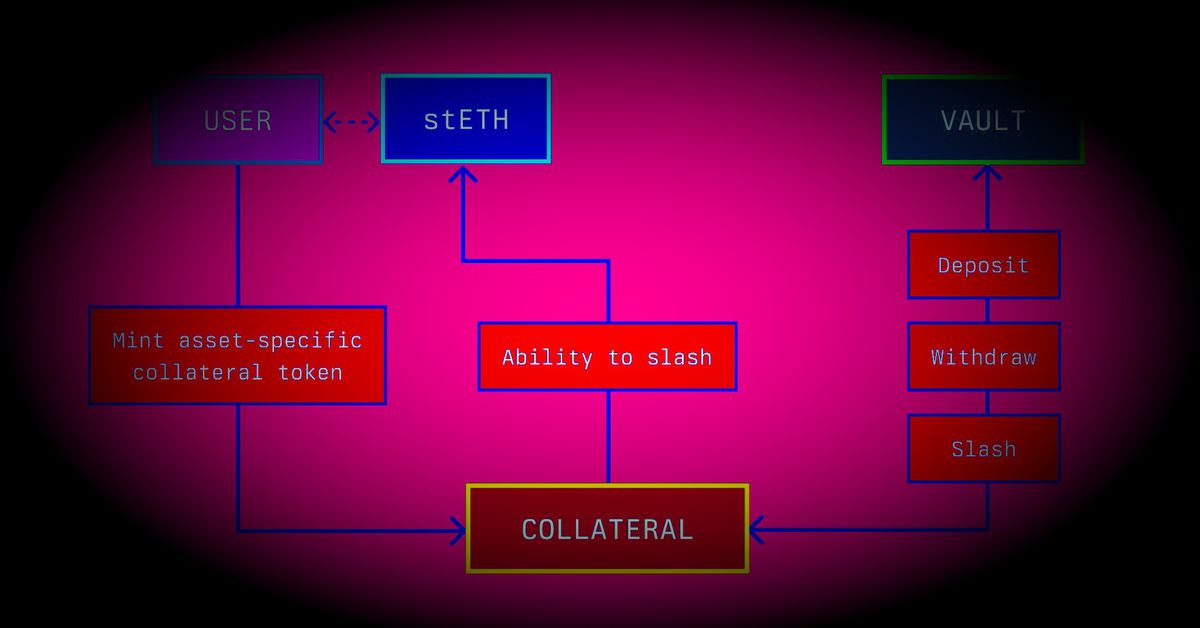EigenLayer’s recent EIGEN “stake drop” wasn’t the moment of industry ecstasy many had hoped for.
Although some novel design features attracted praise, the overall sentiment seemed to skew negative. EIGEN’s initial non-transferability, VC-centric token allocations, and the lack of outright rewards for key DeFi protocols that had driven significant engagement to EigenLayer left many feeling sidelined.
While alternative restaking protocols have been in development for a while, this mixed reaction to EigenLayer’s token drop has shifted some interest towards other players, competitors on Ethereum, and protocols blazing the trail on other networks.
Projects like BounceBit, Symbiotic, Solayer, and Karak Network are some of the more notable examples of buzzy restaking players, each taking their own approach to differentiate themselves, whether through diversifying the assets able to be deposited or the ecosystems they are drawn from.
In this article, we’ll explore the key features of these new protocols to identify what they could bring to the restaking market.
 Karak Network
Karak Network
Karak is a universal restaking layer already compatible with a wide range of assets, including LSTs, stablecoins like USDe and sDAI, and Pendle PT positions.
Backed by funds like Coinbase Ventures, Pantera Capital, and DCG, Karak supports assets across multiple chains like Mantle and Arbitrum, expanding the market share from which it can draw capital. Further, Karak’s approach draws on two more mechanisms to stand out:
- Universal Security: By standardizing capital requirements, Karak makes it easier for new protocols to use secure trust networks through its protocol right from the start. This universal approach simplifies the process of bootstrapping for developers, while also enhancing network intercompatibility.
- Validator Marketplace: Karak creates a marketplace where developers can incentivize validators to use restaked assets to secure their services. This eliminates the need for them to create new, highly inflationary tokens, making rewards more consistent while also reducing costs and making Karak more efficient and scalable.
While still nowhere near the size of EigenLayer, Karak has seen nearly 4x’d its growth over the past month, whether due to disappointment with EigenLayer’s drop or just the market looking for more rewards.
Regardless, Karak’s wide range of asset support, already even supporting DeFi positions, makes it stand out from EigenLayer. Whether it can overcome the capital moat EigenLayer has already built is another question entirely.

Hunt Karak on Airdrop Hunter
 Symbiotic
Symbiotic
Symbiotic, funded by the co-founders of Lido and venture capital firm Paradigm, aims to compete directly with EigenLayer by allowing the restaking of any ERC-20 token on Ethereum.
Little is known about Symbiotic currently besides that the protocol will accept any ERC-20 tokens, significantly expanding the total addressable market for restaking and enhancing its potential to be integrated extensively across DeFi.
It’s not stopping at ERC-20s, though. Symbiotic states it will also accept other forms of collateral, including withdrawal credentials for ETH validators and onchain assets like LP positions, regardless of what blockchain they are on. In other words, restaking your PEPE/MOG Uni V3 position.
A key competitive advantage for Symbiotic may come from its alignment with Lido’s founders. Recently, Lido announced their Lido Alliance framework focused on finding avenues to make stETH the center of restaking. Given Lido’s standing as a leading protocol for Ethereum, stETH’s staple as a core DeFi component, and the founder investment in Symbiotic, this could give the project a strong foundation to launch from and integrate through.
Reported to be launching by the end of the year, Symbiotic’s potential to accept a wide range of ERC-20 tokens and other forms of collateral could position it as a formidable EigenLayer competitor.
Lido Co-Founders, Paradigm Secretly Back EigenLayer Competitor as DeFi Battle Lines Form
The popularity of new blockchain “restaking” protocols led by EigenLayer has drawn a response from the principals behind the liquid staking platform Lido, which itself burst onto the scene a couple of years ago to become the largest project in decentralized finance.

 Solayer
Solayer
The recently soft-launched Solana restaking provider, Solayer, intends to introduce a network of app chains to the popular L1, extending economic security and execution capabilities.
We have started to see some early development of Solana L2s; Solayer could extend this demand, leveraging Solana’s architecture to provide higher degrees of consensus and blockspace customization for application developers.
From a supply side, Solayer certainly has demand, seeing its deposits for SOL and LSTs reach their cap limit of $20M in 45 minutes. While Solayer may have had a strong (soft) launch, the game is certainly not over. It is competing with Cambrian, Picasso, and potentially Jito, which has long been rumored to be building out a restaking play. Given Jito’s position in the ecosystem, Solayer could have their work cut out for them.
 BounceBit
BounceBit
BounceBit brings restaking to Bitcoin, empowering BTC holders to earn yield while expanding opportunities for new applications on the network.
The protocol works by allowing users to deposit their Bitcoin from various networks (native Bitcoin, BTCB on BNBChain, and WBTC) into regulated custody with Mainnet Digital and Ceffu where two things happen..
$BBTC is taking over, are you coming with us, anon? pic.twitter.com/EJRQOoF4zm
— BounceBit (@bounce_bit) May 24, 2024
- Bitcoin in regulated custody is locked, allowing users to mint an equivalent mirror token, BBTC, on the BounceBit chain, delegate it to node operators, and receive stBBTC as a voucher. This stBBTC can then be restaked Shared Security Clients (SSCs) — BounceBit’s AVSs — like bridges, oracles, and sidechains to earn more staking rewards or used for DeFi yield.
- At the same time, the original Bitcoin in custody continues to earn yield through arbitrage, providing continuous income.
Since BounceBit is also EVM compatible, it can bring existing DeFi liquidity to the Bitcoin ecosystem, helping accelerate the adoption of DeFi applications within the network and broadening its use cases and utility.
In summary, BounceBit’s approach allows Bitcoin holders to maximize their yield potential through regulated arbitrage and restaking opportunities while using this capital security to expand the possibilities of what can exist on Bitcoin.
 Who Wins?
Who Wins?
The recent discontent with EigenLayer’s EIGEN token drop opened the door for competing restaking protocols to jump in and capture the interest of dissatisfied users.
BounceBit, Symbiotic, Solayer, and Karak all bring a new angle to the market, expanding and enhancing the restaking landscape overall.
Regardless of which projects garner early traction for their respective network arenas, one thing is certain — EigenLayer has set some pretty massive expectations for the restaking landscape and it’s a potential bounty that plenty of investors and builders are hungry for.
Read More: www.bankless.com









 Bitcoin
Bitcoin  Ethereum
Ethereum  Tether
Tether  XRP
XRP  Solana
Solana  USDC
USDC  Dogecoin
Dogecoin  Cardano
Cardano  TRON
TRON  Lido Staked Ether
Lido Staked Ether  Wrapped Bitcoin
Wrapped Bitcoin  Sui
Sui  Chainlink
Chainlink  Wrapped stETH
Wrapped stETH  Avalanche
Avalanche  Stellar
Stellar  Shiba Inu
Shiba Inu  Hedera
Hedera  Toncoin
Toncoin  Hyperliquid
Hyperliquid  Bitcoin Cash
Bitcoin Cash  USDS
USDS  Polkadot
Polkadot  LEO Token
LEO Token  Litecoin
Litecoin  Pi Network
Pi Network  WETH
WETH  Monero
Monero  Wrapped eETH
Wrapped eETH  Bitget Token
Bitget Token  Pepe
Pepe  Binance Bridged USDT (BNB Smart Chain)
Binance Bridged USDT (BNB Smart Chain)  Coinbase Wrapped BTC
Coinbase Wrapped BTC  Ethena USDe
Ethena USDe  WhiteBIT Coin
WhiteBIT Coin  Uniswap
Uniswap  Bittensor
Bittensor  NEAR Protocol
NEAR Protocol  Aptos
Aptos  Dai
Dai  Aave
Aave  OKB
OKB  Ondo
Ondo  Ethereum Classic
Ethereum Classic  Internet Computer
Internet Computer  sUSDS
sUSDS  BlackRock USD Institutional Digital Liquidity Fund
BlackRock USD Institutional Digital Liquidity Fund  Cronos
Cronos  Official Trump
Official Trump